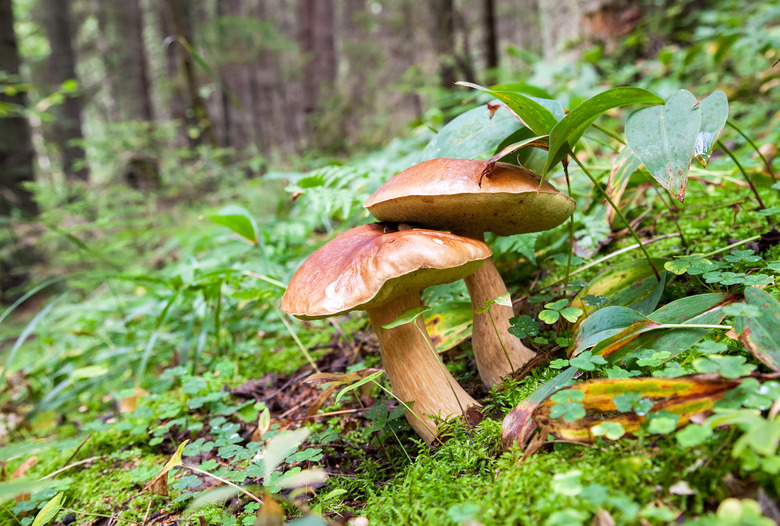List Of Fungi Benefits
Fungi are the group of single celled and multicelled organisms that are nonmotile. Fungi include microorganisms like molds, yeasts and mushrooms. While many types of fungi may cause disease in humans and inflict losses on crops, others provide essential nutrients for the growth of the plants. Fungi are used in the production of chemicals and also in the drug manufacturing industries.
TL;DR (Too Long; Didn't Read)
Fungi cycle nutrients in the environment and a number of fungi (e.g. mushrooms) are edible. They also have medicinal and industrial uses.
Environmental Benefits
Environmental Benefits
Fungi feed on dead organic matter which includes leaf litter, soil, dung, wood and dead animals. They recycle 85 percent of the carbon from dead organic matter and release the locked-up nutrients so they can be used by other organisms. This makes the fungi vital for the ongoing health of ecosystems – defined as a biological environment consisting of all the living organisms in a particular area, along with the nonliving factors with which they interact.
Medicinal Uses
Medicinal Uses
Certain mushrooms such as Ganoderma lucidum, Agaricus subrufescens and Cordyceps sinensis enjoy usage as therapeutics in traditional Chinese medicine. A 2008 study published in the "Journal of Natural Products" found that mushrooms contain unique compounds and nutrients that are effective against viruses. The shiitake mushroom is a source of a clinical drug called Lentinan. In Japan, Lentinan is approved for use in cancer treatments. The well-known antibiotic drug penicillin is derived from the fungus Penicillium. Pieces of fungus were discovered near the body of a neolithic traveler in the Alps; it is theorized that he used some fungus as tinder, and other types possibly medicinally.
Culinary Benefits
Culinary Benefits
Several fungi are edible. These include:
- straw mushrooms
- oyster mushrooms
- shiitakes
- truffles
- milk mushrooms
- black trumpets
Button mushrooms and Portobello mushrooms are commonly used in salads and soups. Mushrooms add flavor to any dish they accompany. Mushrooms contain large amount of vitamin D2, when exposed to ultraviolet light. Recent research conducted by Pennsylvania State University showed that an hour of ultraviolet light exposure right before the mushrooms are harvested raises the vitamin D2 content in the mushrooms.
Chemical Industries
Chemical Industries
Fungi are also used to produce industrial chemicals, including citric, malic and lactic acids. They are also used in the production of industrial enzymes such as lipase, cellulase and amylase. Lipase is used in laundry detergents. Fungi are also used as insect biocontrol agents. Insecticidal toxins produced by fungi can kill insects at very low concentration.
References
- Journal of Natural Products; Anti-HIV-1 Protease Activity of Lanostane Triterpenes from the Vietnamese Mushroom Ganoderma Colossum
- Perspectives in Biology and Medicine: Medicinal Mushrooms and Cancer Therapy: Translating a Traditional Practice into Western Medicine; R. Sullivan et al.; Spring 2006
- Los Angeles Times: If Mushrooms See the Light
Cite This Article
MLA
Mittal, Priyanka. "List Of Fungi Benefits" sciencing.com, https://www.sciencing.com/list-fungi-benefits-8606974/. 19 April 2018.
APA
Mittal, Priyanka. (2018, April 19). List Of Fungi Benefits. sciencing.com. Retrieved from https://www.sciencing.com/list-fungi-benefits-8606974/
Chicago
Mittal, Priyanka. List Of Fungi Benefits last modified March 24, 2022. https://www.sciencing.com/list-fungi-benefits-8606974/
